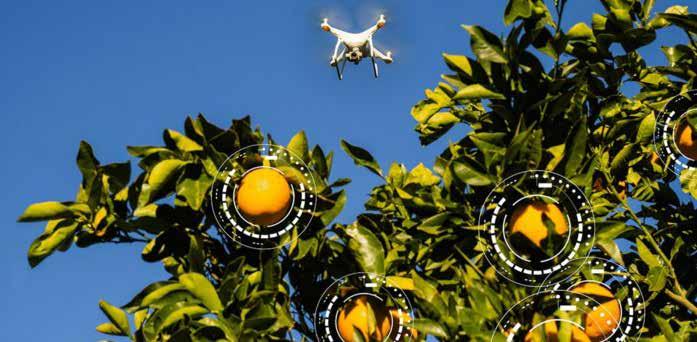FEATURE
HERE’S HOW KUZI IS USING AI, ML TO HELP AFRICAN FARMERS PREDICT, CONTROL DESERT LOCUST SWARMS Kenyan agricultural company Selina Wamucii has developed a free AI-powered tool that is helping farmers across the Horn of Africa and Eastern Africa forecast and control desert locust.
K
uzi the Swahili name of the wattled starling, a bird that feeds on locusts -uses an array of data that includes satellite data, soil sensor data, ground meteorological observation, and machine learning (ML) to predict the breeding, occurrence, and migration routes of desert locusts in East Africa. Selina Wamucii explains on its website that the tool uses a machine-learning model trained on satellite data, soil sensor data, as well as other factors like soil moisture, wind, humidity, surface temperature, and the vegetation index. These factors, the company points out, affect the breeding, swarm formation, and movement of locusts. Kuzi currently displays a real-time heatmap of high-risk areas in Ethiopia, Kenya, Somalia and Uganda. The heatmap also shows forecasts of breeding, swarm formation and potential migratory routes that can alert farmers and pastoralists to potential locust activity up to between two to three months ahead of an invasion. Selina Wamucii spokesperson Tim Wahome said it had taken the startup seven months to develop the tool which went live on 6 January. Prior to that, the firm had been running pilot tests for close to 3
26
SYNAPSE | 1ST QUARTER 2021
months. The company said some of the challenges it faced in developing the tool were around acquiring and processing the huge amount of data available. At the time of writing, Selina Wamucii said Kuzi had over 60 000 farmers registered users, including 89 co-operatives and farmer organisations. Wahome explained that between early to mid-2020, Selina Wamucii saw firsthand the frustration caused by locusts and the impact that had on the farmers the startup works with as they encountered what he said was the worst locust invasion in decades. “Immediately, the question on our mind was, how come such a plague could still strike yet it had been given attention many years back with the first international conference on fighting locusts having been held 100 years ago in 1931? This challenged us but at the same time inspired us to find a solution,” he added. Selina Wamucii points out that early detection and control are “critical” in desert locust management. Using deep learning, Kuzi can spot the formation of locust swarms, giving those
at community level the means to identify and deal with favourable breeding areas. Farmers and pastoralists in Ethiopia, Somalia, Kenya, and Uganda can currently sign up for free SMS alerts -- available in Kiswahili, Somali and Amharic -- of when their respective areas are going to be in danger of a locust swarm attack. The company says anyone can sign up for the service and to capture the GPS





























